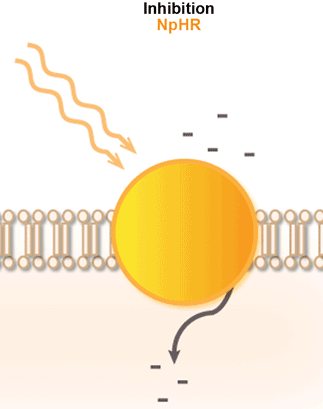Answer: Halorhodopsin is a light activated chloride-specific ion pump.
Halorhodopsin is a seven transmembrane domain protein that is an ion pump. It is selective for the anions, particularly chloride, but can also move nitrates and other halides. Upon activation, it will pump chloride ions into the cell. The movement of negatively charged ions into the cell produces an outward current, which is inhibitory. Halorhodopsin is activated by the yellow / green wavelengths of light, generally around 570 nm. Halorhodopsin is a major advancement in the field of optogenetics, the set of techniques using light to selectively stimulate or inhibit cellular activity.
Within the halorhodopsin complex is a vitamin A derived large molecule called retinal. This molecule can interact with photons of light to induce a change in the structure of the retinal, and this physical change in structure triggers the pump action. These retinal molecules in the halorhodopsin protein are very similar to the retinal molecules that we utilize in our human visual system at the level of the photoreceptor cells in the eyes.
Halorhodopsin itself is derived from a wide variety of bacteria belonging to the class halobacteria. In the laboratory, halorhodopsin derived from Natronomonas (NpHR) have been used in mammalian cell lines to inhibit action potential firing. This form of NpHR was initially localized to the endoplasmic reticulum of the cells, but after modification of the construct to add an ER export motif and a cell membrane localization signal derived from a K channel allowed the new and improved NpHR3.0 to be expressed at the cell membrane.
